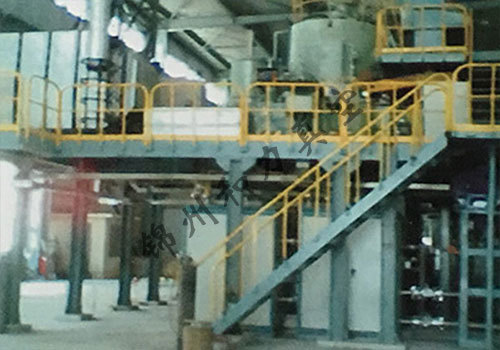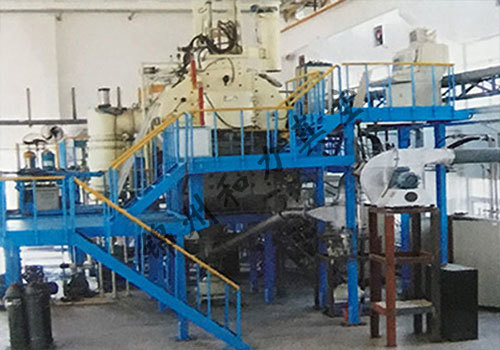Welcome to the official website of Jinzhou Heli Vacuum Metallurgy Co., Ltd!

Email:qj7900@163.com

Service Hotline:+86 416-4185882 +86 13804167900
Three-chamber vacuum melting furnace Vacuum melting furnace Vacuum atomization powder making furnace
VSF atomization injection molding furnace
Keywords:
VSF atomization injection molding furnace

Hotline:
VSF atomization injection molding furnace

1. Introduction to Atomization Injection Molding Equipment
Injection molding, also known as spray casting, is an emerging rapid solidification technology. It combines the two processes of metal melt atomization and deposition into one, directly producing rapidly solidified preforms from liquid metal. It is a low-cost near-net-shape and semi-solid processing technology. It overcomes the problems of complex processes and severe oxidation in powder metallurgy technology, and is currently developing rapidly both domestically and internationally.
2. Principle of Atomization Injection Molding Equipment
The molten metal is atomized into small droplets and rapidly solidified onto a collector. By moving this collector, semi-finished products can be gradually formed. Due to the fast cooling rate during the atomization process, a fine microstructure without macroscopic segregation can be obtained. The movement of the nozzle and the design of the collector shape depend on the design of the atomizer, and can produce metal parts or blanks of a certain shape (such as plates, rods, tubes, disks, etc.).
The semi-finished products produced need to undergo a second processing step, such as heat treatment, rolling, forging, extrusion or HIP. This process can be widely used to produce billets with a wide range of applications, such as aluminum alloys, copper alloys, special steels and high-temperature high-strength alloys, using segmented collectors.
3. Scope of Application
Used for the preparation of various structural materials and functional materials, such as iron-based alloys, aluminum alloys, copper alloys, magnesium alloys, high-temperature alloys, and metal matrix composites.
4. Equipment Classification
1. According to different user needs, the equipment can be customized according to the specific process requirements of the user.
2. According to the environmental atmosphere, it can be divided into: atmospheric pressure, vacuum state or inert gas protection state;
3. According to the weight of the melting material, it can be divided into: 5kg, 10kg, 25kg, 50kg, 100kg, 200kg, 500kg, etc.;
5. Structure and Characteristics
This equipment consists of a melting chamber, an atomization chamber, a deposition chamber, a vacuum system, a water cooling system, a melting power supply and a control part. It adopts a vertical high-rise structure, divided into three layers. The upper layer is the melting furnace and the insulation furnace. The bottom of the insulation furnace can be equipped with atomizing nozzles of different structures. The middle layer is the main working platform. It is equipped with an atomization chamber, melting power supply and electrical control cabinet and high-vacuum unit main pump. The atomization chamber is equipped with a water-cooled collector for deposition work. If powder is to be produced, the collector can be removed for atomization and powder production. The powder can be directly deposited in the deposition chamber below. The bottom layer is the ground level, equipped with a deposition chamber, water cooling system and main vacuum system. The deposition chamber is a powder collection chamber. The powder produced by atomization deposition or atomization powder production is carried by high-pressure airflow through the pipeline at the bottom of the deposition chamber through several sections of cyclone centrifugal separation, and collected in the powder collection cans according to different particle sizes, and the residual gas is discharged through the pipeline.
Inquiry
Related products

